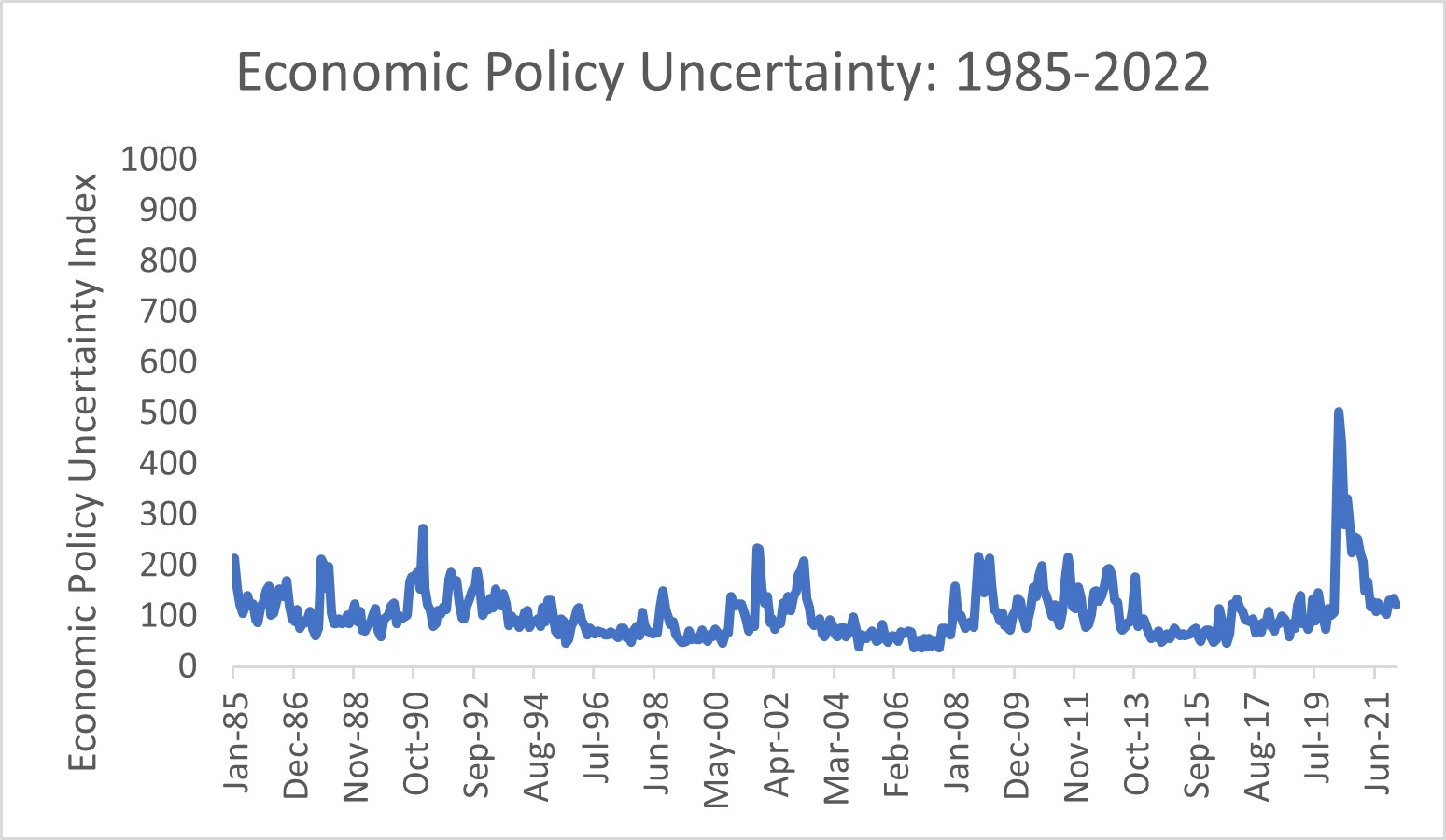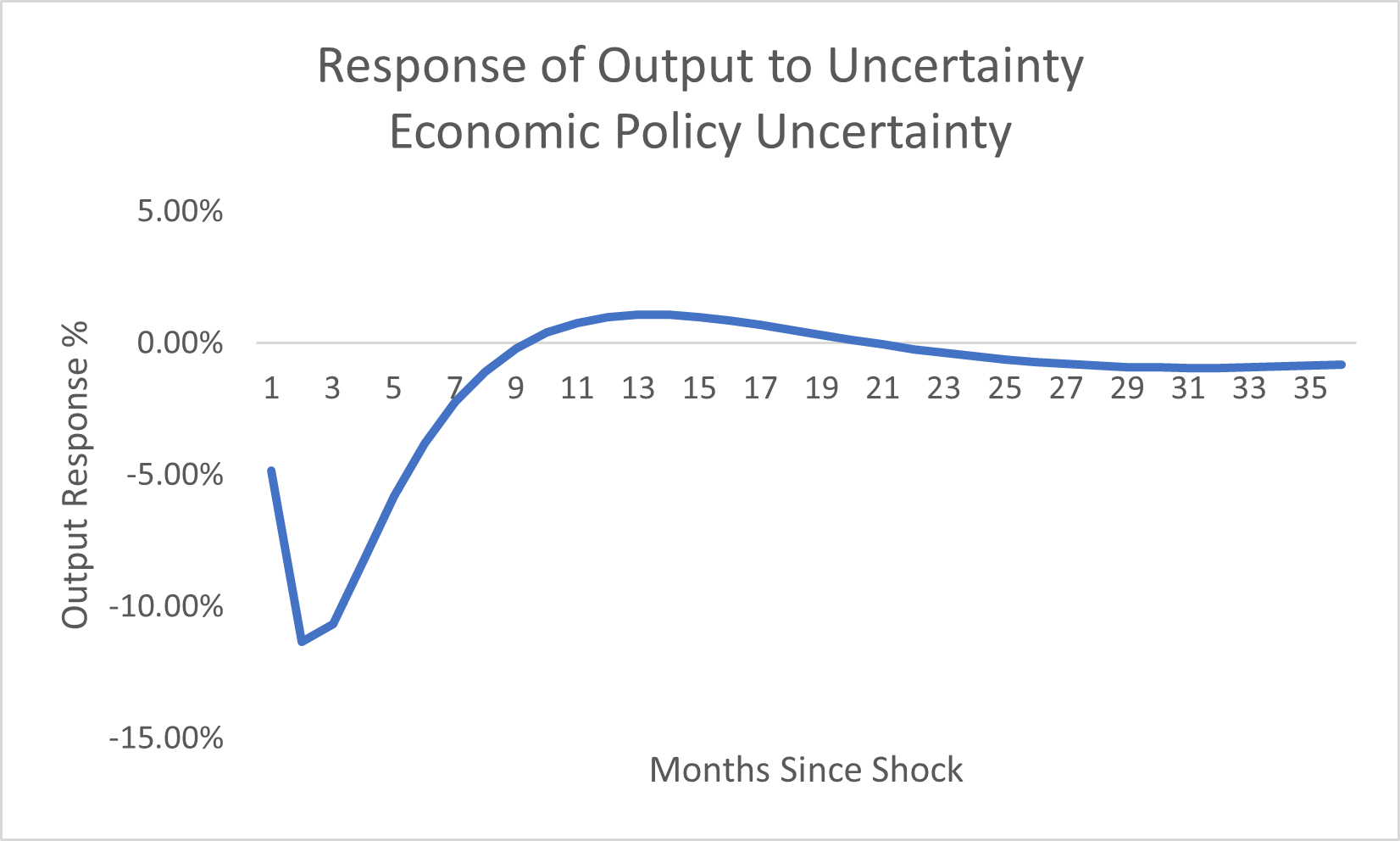The SEC Agenda and the Economic Costs of Heightened Regulatory Uncertainty
- Joe Corcoran
- Kevin Zambrowicz
- Kevin Zambrowicz, Joe Corcoran and Sean Campbell
The following is the second in a two-part blog series on the SEC’s rulemaking agenda. View part one, The SEC’s Current Far-Ranging & Aggressive Rulemaking Agenda Will Raise Regulatory Uncertainty and Risks Unintended, Negative Consequences.
Introduction
The COVID pandemic has undeniably injected a high degree of uncertainty into all of our lives. Basic questions around when our kids will go to school, where we will work, and when life will return to “normal” have occupied our collective conscience for the past few years. The Russian invasion of Ukraine has created additional uncertainty about our global economy and inflation, and has led to questions about how businesses will have to adjust. For financial institutions and financial markets, heightened uncertainty can stifle activities and use of resources, creating opportunity costs or other costs.
Recently, the Securities and Exchange Commission (SEC) has embarked on a wide-ranging and ambitious agenda to significantly change existing market rules and practices over a short period of time across a variety of interrelated markets. At the same time, U.S. capital markets have performed extraordinarily well against recent global events. Changing the “rules of the road” across an array of connected markets represents an unwelcome source of uncertainty – regulatory uncertainty – that is likely to negatively impact markets and the economy. In this post, we highlight recent research on the impact of uncertainty on the economy and extend previous research to directly incorporate the impact of regulatory uncertainty. Consistent with previous findings, U.S. data indicate that increasing economic policy and regulatory uncertainty have important, negative consequences for the broad economy that can persist for an extended period of time. While added uncertainty should not be used as a blanket objection to all regulation, the negative impacts of heightened uncertainty should be directly considered by regulators as increasing regulatory uncertainty may compound other significant uncertainties and impede the ability of capital markets to continue to support the economy as they have over the past few years.
Economic Policy Uncertainty
The idea that rising uncertainty retards economic growth is well-accepted among economists. When households and businesses are uncertain about the future, they postpone investment and spending plans, which reduces growth. At the same time, empirically measuring the size of this effect is challenged by a lack of good and comprehensive data on “uncertainty.” Uncertainty is, by its very nature, hard to quantify and many simply claim that they can “feel” uncertainty. In economic analysis, “feelings” count for very little – hard data are needed.
Recently, however, economists have made substantial progress in empirically measuring economic uncertainty in a rigorous fashion. More specifically, economists at Northwestern, Stanford and the University of Chicago have constructed indexes of economic policy uncertainty that analyze the amount of uncertainty implied by news stories appearing in over 2,000 U.S. newspapers. These indexes are sensible because “news” reflects a release of information that can create uncertainty about the future. These economists have also empirically evaluated the information content of these indexes and compared them to alternative uncertainty measures. They find that these measures convey substantial information about economic uncertainty.
Below, we present two measures of economic uncertainty resulting from this research. The first measure, economic policy uncertainty, is a broad measure of economic uncertainty that incorporates uncertainty over taxes, trade, regulation, and a variety of other sources of economic uncertainty. The second measure is more focused and measures financial regulatory uncertainty, which relates to uncertainty over bank capital, other financial regulatory standards, and related developments at key financial regulators, such as the SEC.
As shown in the figures below, both broad economic policy uncertainty and financial regulatory uncertainty vary significantly over time. Both indexes experienced sharp rises during the financial crisis between 2008 and 2010 and the onset of the pandemic in 2020, which comports with common sense. Both periods were characterized by highly elevated uncertainty by any measure. The index of financial regulatory uncertainty is significantly more volatile than the broader uncertainty index and exhibited its greatest rise during the period of the financial crisis. Alternatively, the broader economic uncertainty index saw its greatest increase during the onset of the pandemic. More still, both uncertainty measures have exhibited a distinct increase since 2010. Since 2010, both broad policy uncertainty and regulatory uncertainty have increased by over 20 percent relative to their 1985-2010 levels.
 Source: Policyuncertainty.org
Source: Policyuncertainty.org
 Source: Policyuncertainty.org
Source: Policyuncertainty.org
Economic Policy Uncertainty and the Economy
With concrete and systematic measures of economic uncertainty in hand, we can assess the empirical impact of rising uncertainty on the economy. A broad set of economists from Stanford, the Federal Reserve, and a host of other institutions recently investigated the impact of heightened uncertainty during the COVID era. Specifically, they estimated the dynamic response of industrial production – a high frequency measure of economic output – to increases in uncertainty like those experienced during the COVID era. Their research focuses on the broader economic policy uncertainty index shown above.
The main findings of their research are reproduced below. The chart below shows the dynamic impact on industrial production from an increase in economic policy uncertainty. As shown in the chart, an increase in policy uncertainty immediately depresses output and the impact worsens and remains negative for nine months before leveling off to zero. Accordingly, rising uncertainty depresses output immediately, but also results in a “hangover” that persists for several months.
 Source: FRED St. Louis, Policyuncertainty.org, and FSF Calculations
Source: FRED St. Louis, Policyuncertainty.org, and FSF Calculations
Describing the underlying rationale for the impact, the authors said, “elevated uncertainty generally makes firms and consumers cautious, retarding investment, hiring, and expenditures on consumer durables.”
The authors’ analysis only considered the broadest measure of economic policy uncertainty. We now extend their analysis by conducting the same dynamic analysis described above, with the exception that we incorporate both the broad measure of economic policy uncertainty as well as the narrower measure of financial regulatory uncertainty. The chart below presents the dynamic impact of both uncertainty measures.
 Source: FRED St. Louis, Policyuncertainty.org, and FSF Calculations
Source: FRED St. Louis, Policyuncertainty.org, and FSF Calculations
As in the previous chart, broad economic uncertainty depresses output and the pattern in the results is essentially identical to that shown before. The impact of financial regulatory uncertainty, however, is new and interesting. Like broad economic uncertainty, financial regulatory uncertainty depresses output with a maximum impact that is of similar magnitude to the maximum impact of broad economic uncertainty. The negative impact of financial regulatory uncertainty, however, abates much more slowly and continues to drag on the economy for at least two years. Accordingly, these results provide direct, data-based evidence that increasing financial regulatory uncertainty places an important drag on the economy that persists for a significant period of time.
The underlying rationale for the identified negative impact of financial regulatory uncertainty is likely similar to that identified by the authors of the aforementioned research. Increasing uncertainty over financial regulation and the “rules of the road” make it difficult for financial intermediaries and end users alike to plan, invest, and engage in financial market activities that support the economy. The long-lived nature of the negative impact may also relate to the often-lengthy process by which financial rules are changed. Uncertainty that results from a spate of new rule proposals, for example, may hang in the air for years until new rules are finalized and implemented.
Implications for the SEC Rulemaking Agenda
Both previous research and the newer results presented here show that increasing economic and regulatory uncertainty places a measurable drag on the economy for up to two years. As we have recently highlighted, the SEC has engaged in a large number of rulemakings that simultaneously impact a number of interrelated markets. The sudden, rapid-fire slate of proposals represents a measurable increase in regulatory uncertainty that may not be fully resolved for a number of years. At the same time, these results should not be interpreted to imply that any change to financial rules is problematic. That is not the case. Over time, as markets and economies evolve, all regulation can benefit from being updated to account for new realities. These changes, however, must be approached methodically and systematically. Relatedly, and as discussed in our recent comment to the SEC, proposals should be subject to reasonable comment periods that give the public ample time to reflect and respond on how proposed changes affect the market under consideration, related markets, and the broader economy. More still, it may well be sensible to allow for the adoption of some new rules to mature and “settle out” before pursuing yet more changes to financial markets. A rushed “ready, fire, aim” approach to regulation may well do more harm than good as the negative consequences of increased uncertainty outweigh any other potential benefits.
Conclusion
Some amount of uncertainty and risk is a necessary part of life that can’t be avoided. At the same time, the evidence is clear that increasing uncertainty places a drag on the economy that can persist for years. The world now finds itself faced with a number of sources of significant uncertainty. We are still working our way through the pandemic and the latest virus variant. The macroeconomic picture is clouded by inflation that is at a 40-year high and rising. Geopolitical uncertainties are also at a high not seen in decades. In the midst of all this uncertainty, regulators should take great care in how they approach financial regulation that may cloud the picture even more. In addition, the U.S. capital markets have been a clear bright spot over the past few years as companies, municipalities, and the U.S. government have all made significant use of market-based finance to manage through the pandemic. Regulators should ensure that they successfully steward the capital markets that have been such a source of strength and resiliency through these highly uncertain times.
Kevin Zambrowicz is Managing Director and Associate General Counsel, Office of General Counsel at SIFMA.
Joe Corcoran is Managing Director and Associate General Counsel in SIFMA’s Capital Markets Group.
Sean Campbell is the Chief Economist, Head of Policy Research at the Financial Services Forum.
Details
More Content
- Pennsylvania + WallDec 18, 2025
Bank of America’s Hari Gopalkrishnan on AI, Innovation, and the Customer Experience
Hari Gopalkrishnan discusses the future of AI, the evolution of customer and employee experiences, and the strategic decisions driving Bank of America’s $13 billion annual technology investment.
Details
More Content
- Pennsylvania + WallDec 18, 2025
Bank of America’s Hari Gopalkrishnan on AI, Innovation, and the Customer Experience
Hari Gopalkrishnan discusses the future of AI, the evolution of customer and employee experiences, and the strategic decisions driving Bank of America’s $13 billion annual technology investment.